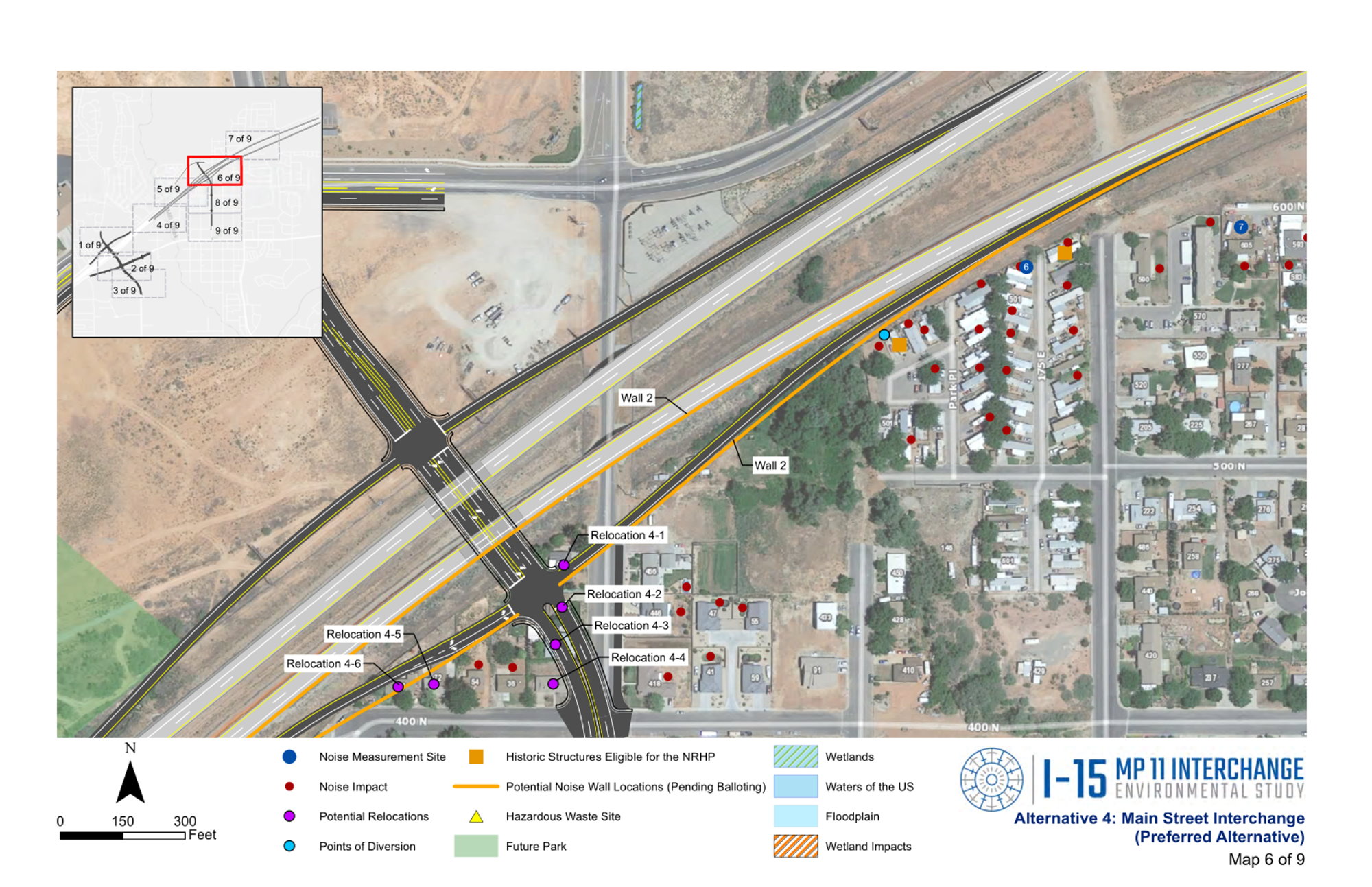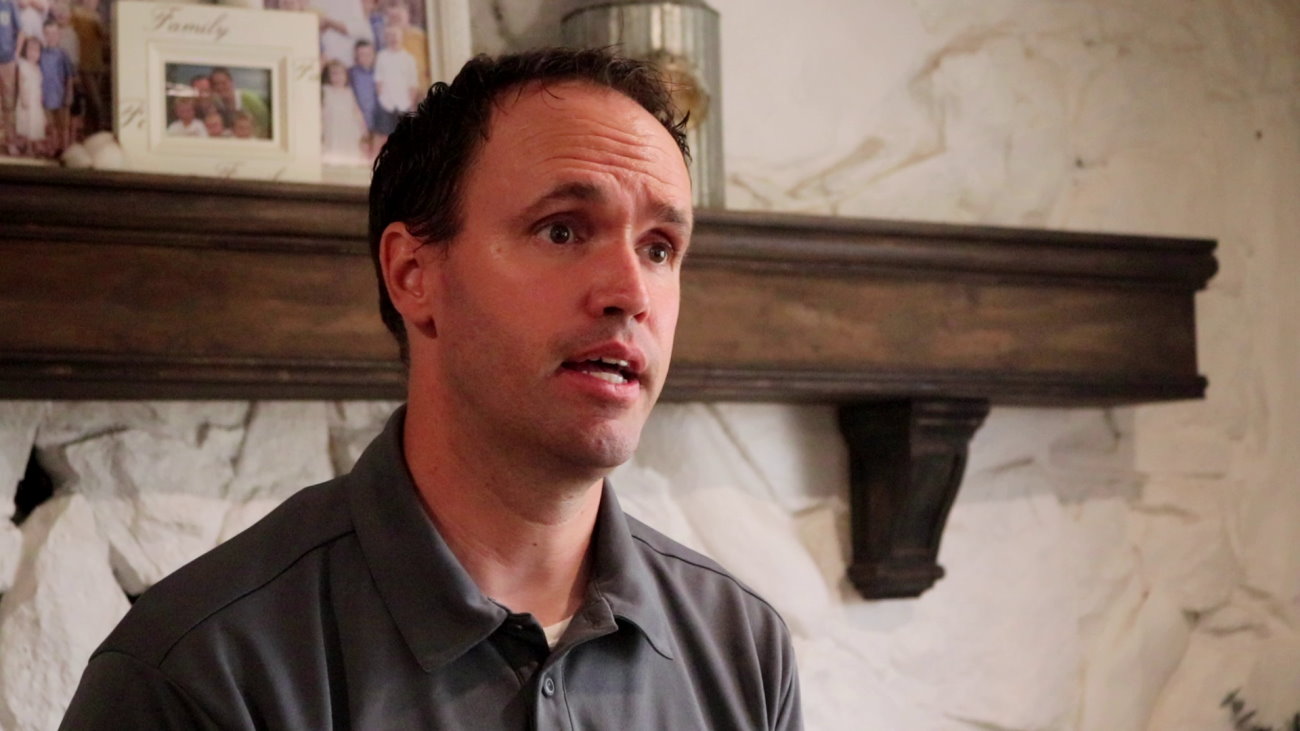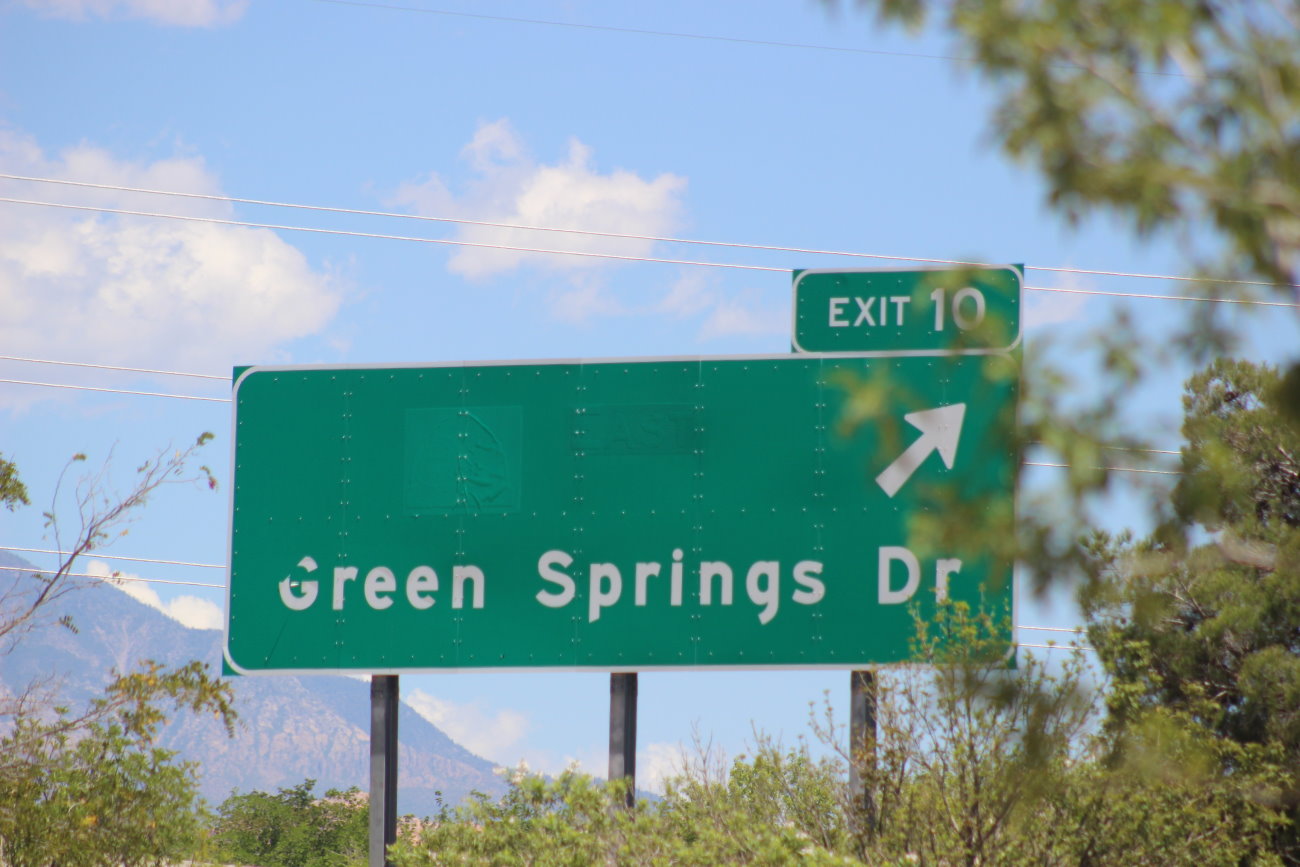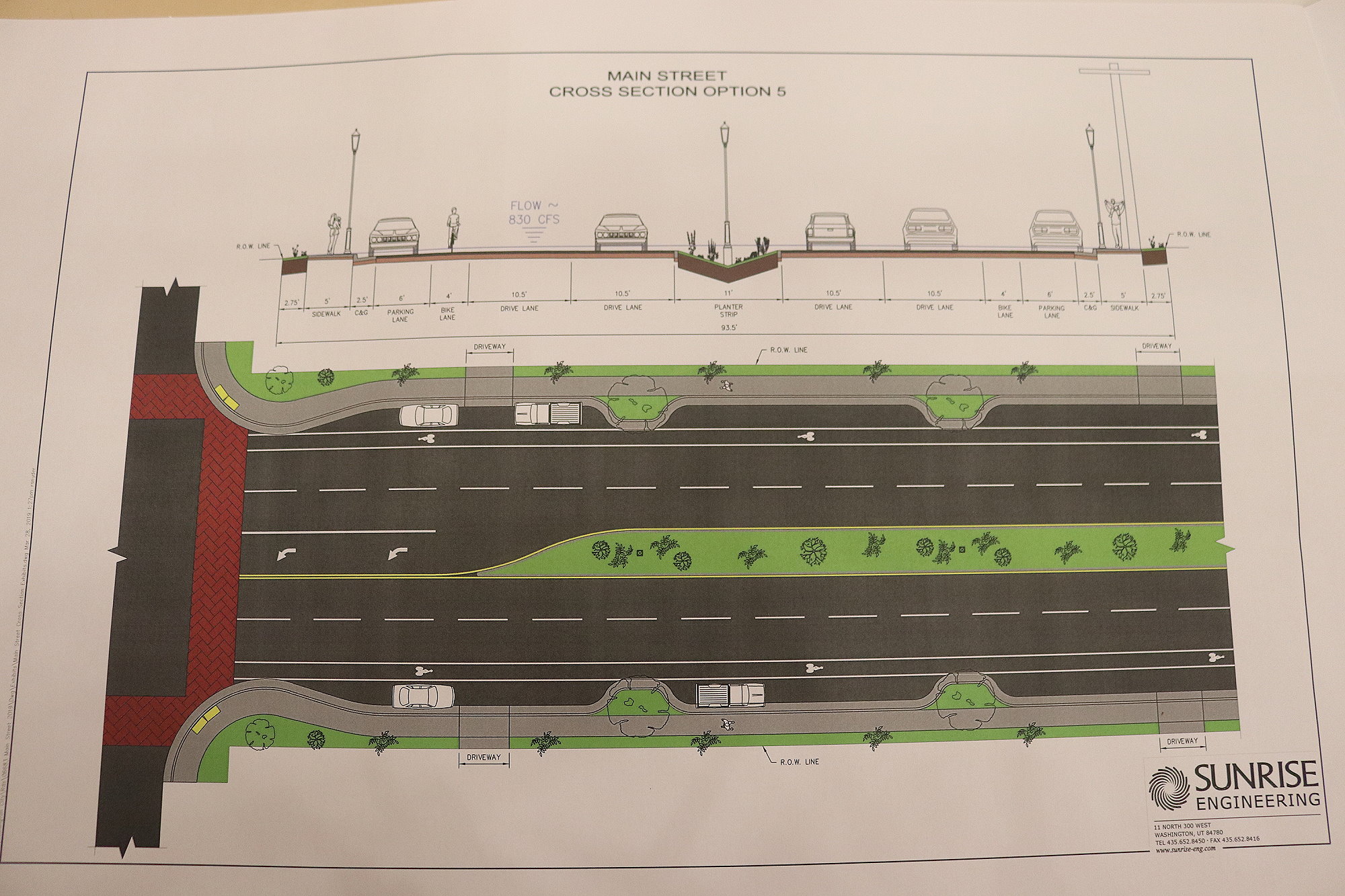WASHINGTON CITY — Two years ago a process examining the potential for a highway interchange in the downtown area of Washington City got underway. Called the “Milepost 11 Project,” state and local road planners say it will help reduce some of the congestion at the Exit 10/Green Springs Drive interchange on Interstate 15.
However, as the proposed interchange would empty onto Main Street in the residential heart of Washington City, locals aren’t so sure smoother traffic is, as they see it, worth destroying the cohesion and community.
‘It will destroy the heart of Washington City’
Cheryl Koeven, a Washington City resident who lives on Main Street, recently sent an email to St. George News that outlined concerns she has over the potential interchange.
“It will destroy the heart of Washington City by introducing exiting freeway traffic into a completely residential neighborhood,” Koeven wrote.
She is not alone, as others who live on or near Washington City’s Main Street worry it will do more harm to the community than good.

The official environmental study process got underway in the summer of 2017, at which point residents spoke out in City Council meetings and in subsequent open houses held by UDOT and their partners. These meetings detailing the planning process and the different options proposed to help reduce traffic woes around the Exit 10/Green Springs Drive interchange, which is considered one of the county’s more notorious interchanges due to congestive issues, especially during the holidays.
A citizen committee representing various stakeholders was also selected by the mayor to consult with the engineers engaged in the study.
Despite this, Main Street residents who spoke with St. George News said they felt they either hadn’t been listened to or were just given lip service on a decision that had already been made. Others feel there wasn’t enough of an effort made to communicate with residents from the start.
“We have no say,” said Greg Boothroyd, who has lived on Main Street with his wife, Jacque, for the last decade. “This is going to bring a lot of heartache and heart break to the people on Main Street.”
According the draft environmental study for the Milepost 11 Project – which is expected to be finalized sometime in August – Main Street is considered the best option for alleviating the traffic issues at Exit 10 while also having the least impact.
In addition to the interchange, UDOT will also engage in improving infrastructure around Exit 10/Green Springs Drive to aid in this goal.
A handful of alternatives were presented to the public during one of the project’s open houses last year, including putting the interchange at the top of 300 East. However, according to the project’s draft study, doing so would prove to be far more disruptive to the community than the Main Street alternative.
The latter alternative – which puts the interchange southwest of the current underpass – includes the relocation of at least six residences located on the west side of 400 North, as well as homes lining the west side of Main Street between 400 North and the current Main Street underpass.

The proposed location also causes the current alignment of Main Street to shift to the west around the area of 400 North and then go underneath the highway and onward to intersect with Buena Vista Boulevard opposite of Brio Parkway.
“We are deeply concerned,” Brio resident Sherry Clarke said about the pending interchange. “None of us knew anything about this interchange when we first bought our homes here. We do not want it by any stretch of the imagination.”
Brio is a senior community meant to be a quiet place, Clarke said, something that the noise and traffic coming off the interchange will ruin.
Interchange will ‘absolutely alter and change the function and identity’ of Main Street
Worries over noise, traffic and myriad other issues, such as property values and safety impacts, are shared by many who live along Main Street, including Washington City Council members Douglas Ward and Daniel Cluff, both of whom originally ran on opposing the proposed interchange.
Cluff spoke with St. George News at his home and reiterated his concerns, as well as his belief that the scope of the study done by UDOT wasn’t broad enough or necessarily took the human and community impact into account as much as it could have. Overall, for good or bad, he said, the interchange will forever change the character of the downtown area if built.

“This is a decision of a ‘before and after.’ It will never be the same,” Cluff said. “There will be a Washington City before there was an interchange and a Washington City after. Regardless of the most negative or positive effect of what may happen, its impact will absolutely alter and change the function and identity of that downtown area.”
While people on Main Street may learn to live with having an interchange next door and the traffic that goes with it, Cluff nonetheless said he’s also “really concerned about having I-15 as an active partner of that residential area.”
“I just get nervous of what happens when you have high access on I-15, and with the concepts of human trafficking and possible drugs and all those things – I don’t want that stuff to set up in our town.”
Commercial property at interchanges actually helps buffer a lot of potential criminal activity, Cluff said, but having it spill right into a residential zone presents some unknowns.
While the idea of crime coming off I-15 may be seen as a boogeyman of sorts by some, Cluff’s concern isn’t completely off base.

Recently two businesses between Washington City and St. George near I-15 exits 10 and 4 were burglarized in similar instances during the same night. Due to these similarities, Washington City Police Chief Jason William said he believes the suspects weren’t local but rather came off I-15 and quickly returned to it after committing the crimes.
However, while these incidents do occur, authorities have also stressed they are not exceedingly common.
Fears of trading community for commercial
Another area of concern previously raised by Cluff is that putting an interchange on Main Street will ultimately cause the neighborhoods there to be replaced with commercial development. This was also raised by Koeven in her email.
“It seems obvious to me that the purpose of an off-ramp is to develop commercial property to build tax base,” Koeven wrote. “The city owns property north of the freeway at Main Street.”
Besides the property on the north side of I-15, there’s also concern that the city could eventually allow commercial zoning to replace the residential zoning on the southern side. This possibility is referenced in the Milepost 11 Project draft study regarding impacts the interchange could have on the area. The study states:
The construction of a new interchange at Main Street could lead to pressure on Washington City in the long term to change the current residential zoning along Main Street south of the proposed interchange. This could lead to increased commercial development in what is currently a residential area. However, any changes to land use in the area would be made by elected officials through a public process.
Cluff echoed that last part.
“The good news about this is the zoning is still up to the council,” he said. “What happens with the zoning and everything else is strictly up to our council, so I hope they address the future of this area with insane respect and care to the people who live there.”
Tom Callister, of Linx Commercial Real Estate, said there’s a lot of interest in commercial properties along I-15 in general and pointed to the growth around the Exit 13/Washington Parkway interchange.
“We’ve seen a lot of activity along I-15,” Callister said, adding Linx has sold a dozen properties along I-15 over the last two years to developers.
Reasons for businesses to set up along I-15 include having greater visibility to passersby while also drawing in the tourist market, he said.
For a city, more commercial development means more sales tax that can be used to fund city functions and services.
‘The neighbors are the base of the whole street’

Boothroyd said that while commercial development may be good for the city, it’s not good for the residents, who are concerned about losing the way of life they’ve come to know.
“What do I stand to lose? A bunch of my neighbors for one,” Boothroyd said. “We have got the greatest neighbors in the world. … The neighbors are the base of the whole street.”
Koeven wrote that she fears the interchange will create a literal divide in an otherwise cohesive and special community due to making it difficult to cross Main Street as traffic increases.
Washington City is a special community, where neighbors care and help each other. There is a level of acceptance here that creates a very unique, welcoming feel. People don’t care if you are a mechanic or a PhD. You have value just because you are a neighbor. There is a willingness to reach out and help others here, to lift each other and to keep that special community feel.
Cluff said some people have lived their whole lives on Main Street, which is a part of the beauty of what has been a small town and safe haven for generations.
“Finding a place of comparable or equal value is going to be a hard stretch in Washington County,” he said.
For resident Marvin Ayala, who bought his home on Main Street two years ago and now stands in the potential path of a new interchange, he could be forced to relocate.
“It sucks,” he said. “It’s not a good feeling.”
Is it really necessary?

The overall purpose of the interchange is to help reduce congestion at Exit 10 by 20-30% over the next 20-30 years; however, some Main Street residents who spoke to St. George News felt the new interchange “wouldn’t fix a damn thing.”
“In the first place, I don’t think it’s necessary,” said long-time resident Grant Mitchell as he stood outside his home inspecting a nearly completed brick wall being built in his front yard. “Secondly, it’s not going to do what they think it will.”
Even if it does, Cluff has previously stated he’s still not entirely convinced that a 20-30% reduction over the following decades is worth forever changing the character of the downtown area.
Being able to accommodate increasing traffic that will come from projected population growth in the county is also one of the reason’s given by road planners as to why the proposed interchange is considered necessary.
“I think it’s pretty useless, because we have interchanges really close by,” said Katrice Schimbeck, who lives in the area of 300 East but was on Main Street tending to a garden kept on a friend’s property. “I don’t think it’s needed.”

Schimbeck said she wishes UDOT would have gone with one of the alternative options that didn’t involve gutting the downtown area.
“If we have to have an off-ramp, which I still don’t want – make that very clear – if we have to do something, may it be the very best, residential-friendly off-ramp that’s ever existed on I-15, and make that the new standard,” Cluff said.
Main Street is changing regardless of the interchange
Though a decision on whether a new interchange will be built in the area of Main Street has yet to be announced and, even then, could still be several years away from construction depending on various circumstances, the face of Washington City is changing regardless.
Earlier this year the City Council approved plans to widen Main Street to four lanes and also invert the middle of the roadway to act as a flood control measure with an overall design similar to Santa Clara Drive. It will also contain various “traffic calming measures” aimed at keeping traffic within the post speed limit. It will also put curb and gutter along both sides of the street, as well as add bike lanes.
The changes to Main Street were prompted by two monsoon storm-caused floods that buried Main Street in water and mud last summer. The flooding has been an issue in recent years, and area residents have blamed development on the north side of the highway, which they claim has destroyed preexisting flood control measures.

While the widening of the street was proposed as a way to help deal with future potential flooding, some Main Street residents aren’t happy about it, as the widening of the street has claimed 8 feet or more on either side of the roadway.
“Why have I been taking care of 9 feet of city property for 10 years?” Boothroyd said.
Currently, there are a series of posts with orange flags lining either side of Main Street showing how far the new roadway will cut into the front yards of the many homes that line the street. The posts, according to the city, mark the right of way the city has had all along and is now using for the flood control project.
Beyond a flood control measure, many residents see the changes as another way the city is preparing for the traffic that will go to and from the Main Street interchange, as the two will ultimately tie into each other.
The widening project is currently in the design phase and is slated to begin construction in January and finish by June before the 2020 monsoon season begins.
Cluff said the city is taking extreme care to make sure the work done to Main Street is to the benefit of the residents and that he hopes the care the city is working to show in the Main Street improvements transfers over to the interchange.
“As per the off-ramp, I’ve been assured there will be a lot more interaction with UDOT when we talk about how the final design works, and that Washington City will be a partner in both the design and the function.”
Ed. note: A quote from Washington City Councilman Daniel Cluff was misattributed to Katrice Schimbeck and has been corrected.
Copyright St. George News, SaintGeorgeUtah.com LLC, 2019, all rights reserved.